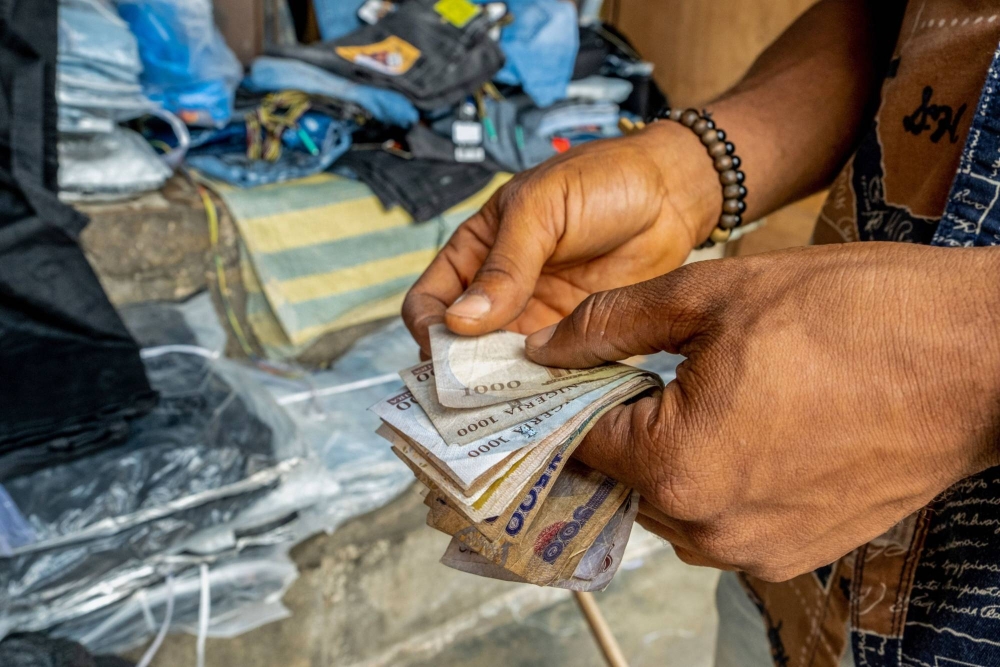

Ending Extreme Poverty through Direct Cash Transfers
LOME, TOGO –
For decades, the international community has grappled with the challenge of ending extreme poverty, which is the leading Sustainable Development Goal for 2030.
Despite some progress, we remain far off track, with an estimated 700 million people still struggling to survive on less than $2.15 per day. Unlike in previous decades, however, we now have a solution that can be scaled up rapidly to accelerate the end of extreme poverty: direct cash transfers to the poorest households.
The Power of Direct Cash Transfers
The concept itself is not new. Cash aid has proven effective, especially in the face of emergencies. During the COVID-19 pandemic, one of every six people in the world received some cash assistance. Direct transfers are powerful tools for helping individuals take control of their lives and invest in their families’ well-being. That is why high- and middle-income countries are increasingly incorporating cash aid as a central part of their social safety nets. Still, it is estimated that less than 5% of the $200 billion spent annually on international development is allocated to cash transfers.
Scaling Up for Impact
In order to achieve the Sustainable Development Goals (SDGs), it is crucial to prioritize and increase the allocation of resources towards direct cash transfers. By doing so, we can provide immediate relief to those living in extreme poverty and empower them to break free from the cycle of deprivation.
Scaling up direct cash transfers requires a multi-faceted approach. Governments, international organizations, and philanthropic foundations must collaborate to develop efficient and transparent mechanisms for delivering cash aid. This includes leveraging technology and digital platforms to reach the most vulnerable populations, ensuring that funds are disbursed securely and directly to those in need.
Furthermore, it is essential to strengthen the capacity of local communities to effectively implement and manage cash transfer programs. This involves providing training and support to local leaders, social workers, and financial institutions to ensure the sustainable and equitable distribution of funds.
Conclusion
Direct cash transfers have the potential to be a game-changer in the fight against extreme poverty. By prioritizing and increasing investments in cash aid, we can make significant progress towards achieving the SDGs and improving the lives of millions of people around the world.
SDGs, Targets, and Indicators
-
SDG 1: No Poverty
- Target 1.1: By 2030, eradicate extreme poverty for all people everywhere, currently measured as people living on less than $1.25 a day.
- Indicator 1.1.1: Proportion of the population living below the international poverty line, by sex, age, employment status, and geographical location (urban/rural).
-
SDG 10: Reduced Inequalities
- Target 10.1: By 2030, progressively achieve and sustain income growth of the bottom 40% of the population at a rate higher than the national average.
- Indicator 10.1.1: Growth rates of household expenditure or income per capita among the bottom 40% of the population and the total population.
The article addresses two Sustainable Development Goals (SDGs) – SDG 1: No Poverty and SDG 10: Reduced Inequalities.
Under SDG 1, the article highlights the challenge of ending extreme poverty, which is the leading Sustainable Development Goal for 2030. The article mentions that there are still an estimated 700 million people struggling to survive on less than $2.15 per day. This aligns with Target 1.1 of SDG 1, which aims to eradicate extreme poverty for all people everywhere by 2030. The article also indirectly refers to Indicator 1.1.1, which measures the proportion of the population living below the international poverty line.
Under SDG 10, the article discusses the concept of direct cash transfers to the poorest households as a solution to accelerate the end of extreme poverty. This relates to Target 10.1, which aims to achieve and sustain income growth of the bottom 40% of the population at a rate higher than the national average. The article implies Indicator 10.1.1, which measures the growth rates of household expenditure or income per capita among the bottom 40% of the population and the total population.
| SDGs | Targets | Indicators |
|---|---|---|
| SDG 1: No Poverty | Target 1.1: By 2030, eradicate extreme poverty for all people everywhere, currently measured as people living on less than $1.25 a day. | Indicator 1.1.1: Proportion of the population living below the international poverty line, by sex, age, employment status, and geographical location (urban/rural). |
| SDG 10: Reduced Inequalities | Target 10.1: By 2030, progressively achieve and sustain income growth of the bottom 40% of the population at a rate higher than the national average. | Indicator 10.1.1: Growth rates of household expenditure or income per capita among the bottom 40% of the population and the total population. |
Behold! This splendid article springs forth from the wellspring of knowledge, shaped by a wondrous proprietary AI technology that delved into a vast ocean of data, illuminating the path towards the Sustainable Development Goals. Remember that all rights are reserved by SDG Investors LLC, empowering us to champion progress together.
Source: japantimes.co.jp

Join us, as fellow seekers of change, on a transformative journey at https://sdgtalks.ai/welcome, where you can become a member and actively contribute to shaping a brighter future.

